Are we using unsustainable resources to keep home energy costs at bay? And are there better alternatives?
With the cost of energy rising, many of us chose not to crank up the heating and cosied up in extra jumpers this winter. But having the heating on (or not) isn’t the only factor determining your energy bill. If your home is well-insulated, you’ll need less energy to keep it warm and therefore pay less. So, the materials used in building homes, from bricks and cement to the insulation within walls and in lofts, have a big impact on what we pay for energy.
Many of the materials we use to keep our homes warm and well-insulated are made from plastic. So, while we might be saving money and energy through better insulation, at the same time we’re using up unsustainable resources to make these materials. Plus, at the end of their lives, they will often end up as pollution; plastic waste to add to the ever-increasing pile. Worldwide, about 18% of the plastics produced are for the construction industry. While the plastics in buildings tend to last longer than plastics used in other applications, about 5% of the world’s plastic waste is still from construction. In the UK, about a third of this plastic waste goes straight to landfill.
So, do the energy-saving benefits of plastics ever outweigh their negative impact on the environment? And can we get the same energy-saving benefits from other, more sustainable and less polluting materials?
There are many reasons we use plastics in our homes. Generally, they’re strong, lightweight, waterproof, can be easily moulded into different shapes, and the forms used in buildings have a lifespan of up to 35 years. But their insulating properties are particularly relevant to saving energy.
Incredible insulators
To understand why plastics are such good insulators, we need to know a little about thermal conductivity – how well a material transfers heat. Materials that are worse at transferring heat have a lower thermal conductivity and are better insulators. Unlike metals, for example, plastics aren’t very good at conducting heat, giving them fairly low thermal conductivities to begin with. But the fact that their structure can be tailored to incorporate lots of air makes them even better insulators.
In your class
Use this article to show your students how the construction industry uses polymers. You can use this as interesting context to review knowledge and understanding of addition and condensation polymerisation, as well as issues related to the disposal and sustainability of plastics.
Scroll down to get the two accompanying resources: an evaluation skills activity on recycling plastics for 14–16 year-olds and context-based questions to help your 16–18 year-old learners practise applying knowledge to unfamiliar contexts.
As Joe Zhao, an expert in chemical and biological engineering at the University of British Columbia, in Vancouver, Canada, explains: ‘Most insulation materials are designed to trap air.’ This is because air also has a low thermal conductivity. For example, its thermal conductivity is about 35 times lower than concrete.
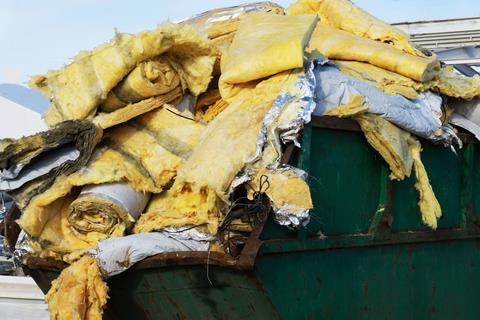
Plastic insulation materials often contain lots of small pockets – a sponge-like structure works well – that maximise air-trapping. The structures of expanded polystyrene (EPS) and extruded polystyrene (XPS) insulation trap air in this way, Joe says – the downside being that they are made from by-products of the petrochemical industry. Similarly, polyurethane spray foam (SPF) hardens to a solid with a bubbly structure full of pores, although it is initially sprayed on as a liquid to fill cracks and awkward spaces. Even doors can be filled with plastic foams to reduce heat loss.
What’s the problem?
Being great insulators, plastics can help us save energy and reduce costs at home over a long period. The problem, though, is not how they perform while they’re in our homes; it’s how they’re manufactured and what happens to them when they become waste. In 2022, Joe collected results from lots of previous studies, looking at the environmental impact of plastics used in building insulation. Many of the studies used an approach called Life cycle assessment to consider the impact of plastic insulation from manufacture to disposal.
Download this
Recycling plastics evaluation, for age range 14–16
Context-based questions, for age range 16–18
Use the resources with your learners to practise applying their polymer knowledge in an unfamiliar context. Download the student worksheets and teacher notes, with answers, from the Education in Chemistry website: rsc.li/3GllMct
As well as using unsustainable materials (fossil fuels), plastic insulation materials are made in manufacturing processes that release greenhouse gases and compounds that are toxic to the environment or the workers in manufacturing facilities. The manufacturing process for XPS foam polystyrene, for instance, releases hydrofluorocarbons (HFCs), which are much more potent greenhouse gases than CO2. Use of HFCs for making polystyrene is being phased out. Meanwhile, producing polyurethane results in toxic chemicals entering the environment, including isocyanates, polyols and chemicals that are applied as flame retardants (many plastic-based foams pose a considerable fire risk).
When plastic instulation materials reach the end of their useful life, as Joe explains, they become hard to recycle. ‘When the old buildings are knocked down, the wall materials, including insulation materials, are mixed with other building materials,’ he says. ‘They are hard to separate [so] are normally disposed to landfills.’ Over decades, the plastics in landfills are broken down into small particles that end up in waterways and this is one sources of plastic particles in rivers and oceans.
Recycling revolution
Although the plastics used in buildings aren’t usually recycled, increasing the recycling of plastics (from buildings and other applications) could be one way to reduce the amount of new plastic materials we make. According to Nur Hanis Zulkernain from the Quest International University, Perak, Malaysia, we can incorporate plastic waste into some building materials (not just insulation), without changing the production processes much. She has reviewed the existing research to consider how we can use small particles of plastic waste to replace the aggregate materials – like sand, gravel and crushed stones – in concrete and mortar, as well as to make other building materials including bricks.
Manufacturing processes for these materials tend to be less intensive and polluting than traditional recycling treatments, Nur Hanis says. For instance, the plastic waste used for making aggregate can simply be ground down into smaller particles and mixed into unset concrete or mortar. In an ideal world, the plastic waste would also be locally sourced, reducing transport costs and emissions too.

But how do these recycled plastic materials perform and do they save us any energy? According to some studies, they may improve on the insulating properties of ordinary building materials. One example is the replacement of sand in aggregate with expanded polypropylene (EPP) waste, which can reduce the thermal conductivity of concrete by nearly two thirds, making it a better insulator. ‘Addition of plastic waste in construction materials has dramatically enhanced the thermal insulating properties of building materials,’ says Nur Hanis, explaining that it causes ‘voids’ to form inside the materials. These voids act as air pockets that can, as we know, lower the thermal conductivity and reduce heat loss, helping to save energy.
So far, however, these types of materials have not been widely used. According to Nur Hanis, this may be due to issues in the building industry with standardising their production processes and ensuring they will perform well in the long term. Besides, she notes, there are lots of different plastic materials that can be incorporated and ‘the optimum design is still yet to be fully developed.’
Fabulous fibres
There are popular alternatives to plastic insulation materials in the building industry – such as fibreglass and rock wools – but even if they perform as well, they are often just as polluting and difficult to recycle as plastics.
Alternatively, some natural fibres may provide environmentally friendly substitutes. Many of these are wastes from farming, forestry and food processing and are currently being studied for their potential as insulating materials. According to Joe, good natural options are ones containing pores, just like the artificially made plastics. ‘Natural fibres offer the same function,’ he says. ‘To trap air inside.’
More resources
- Use the differentiated and editable organic chemistry worksheets on addition and condensation polymerisation to assess your 14–16 year-old learners’ knowledge in applied contexts.
- Quiz your 16–18 students on their organic chemistry knowledge and problem-solving skills and polymers.
- Link to careers by introducing your students to Océane, a research and development chemist who works at a sustainable packaging startup that uses seaweed instead of plastic.
- Explore how the properties of polymers depend on their structure and different types of intermolecular bonds using this lesson plan for 16–18 year-old learners.
More resources
- Use the differentiated and editable organic chemistry worksheets on addition (rsc.li/43hUaPz) and condensation polymerisation (rsc.li/40ZoX1K) to assess your 14–16 year-old learners’ knowledge in applied contexts.
- Quiz your 16–18 students on their polymers knowledge with this Starter for 10 activity: rsc.li/3monwuR
- Link to careers with Océane’s job profile (rsc.li/3GAhIoV). She is a research and development chemist who works at a sustainable packaging startup that uses seaweed instead of plastic.
- Explore how the properties of polymers depend on their structure and different types of intermolecular bonds using this lesson plan: rsc.li/41lHgyi
Some of these natural fibres have similar thermal conductivities to plastics. Hemp and flax are the most widely studied and, in some cases, have demonstrated thermal conductivities close to that of XPS. However, others are more widely available, such as rice straw. Rice straw is the part of the rice plant that we don’t eat and is discarded during harvests. Although it has a thermal conductivity slightly higher than plastic insulation materials, it’s thought to have good potential for insulating walls and ceilings and would make use of large volumes of waste with a low impact on the environment.
One problem is that some types of natural fibres can be more expensive options than plastics. Another is that they tend to be weaker and this is one of the issues that Joe is trying to solve as part of a team working to develop natural fibre-based insulation materials. His team is testing small-scale production of waste paper-based materials with a honeycomb structure. This structure improves the strength of the materials and lowers their thermal conductivity by trapping air inside the honeycomb cells.
While it’s clear that plastics provide some of the best properties for insulating our homes – offering long-lasting energy savings during their use – we have to consider more broadly how their production, use and disposal impacts on the environment. Joe says we should be thinking about, ‘Minimising the consumption of plastics and fossil resources,’ which might mean considering a wider range of options for insulating our homes.
This article was updated on 22 September 2023 to correct a statement about EPS manufacture and greenhouses gases and to clarify the recycling of plastic insulation materials.
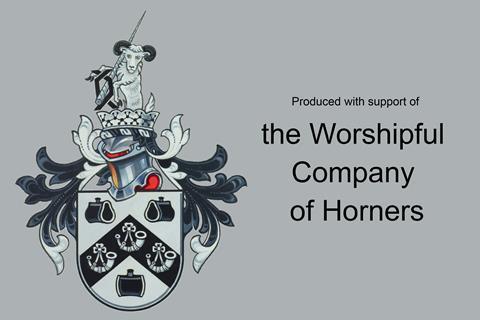
Article by Hayley Bennett, a freelance science writer and editor based in Bristol, UK. Resource by Martin Bleumel, a retired head of chemistry




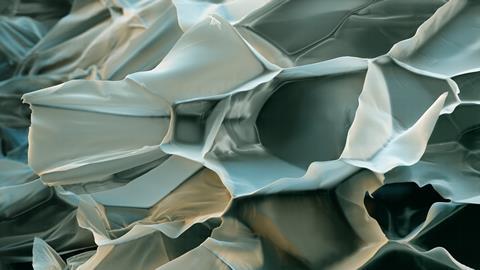

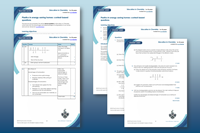
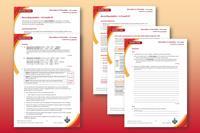









No comments yet